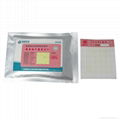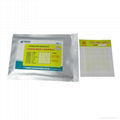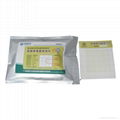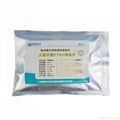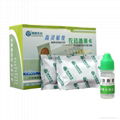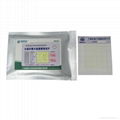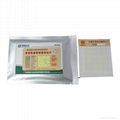| Model: | BE211 |
|---|---|
| Brand: | Oasis |
| Origin: | Made In China |
| Category: | Industrial Supplies / Other Industrial Supplies |
| Label: | count plate , coliform , food safety |
| Price: |
US $25
/ pc
|
| Min. Order: | 1 pc |
| Last Online:17 Mar, 2017 |
1.Principle&application scope
The number Coliform is one of the important index in the evaluation of food hygiene quality, coliform number indicates the level of food contamination during the process of food production. Coliform count plate contains lactose-bile salt medium, exclusive chromogenic agent of galactosidase and macromolecule bibulous gel, and it can make the colony easy to be counted using microorganic test technology. This product is suitable for counting the quantity of coliform in food, drinking water and raw material, also it’s suitable for hygiene detection of instrument surface.
Executive standard: Food safety national standard ,
Food microbiological examination: Enumeration of coliform (GB4789.3)
2. Using method:
2.1 Sample preparation:Prepare the 1:10 solution by placing 25g or 25mL sample into 225mL sterilized phosphate buffer solution or sterilized saline, then prepare 1:100 solution by sucking 1mL solution(1:10) into 9mL sterilized phosphate buffer solution or sterilized saline.
2.2 Inoculation: Select 2-3 appropriate dilution ratio to do the test for ordinary food, while for some liquid sample which has little coliform directly suck raw liquid to do the test. Place coliform count plate onto sterile experiment table, uncover the film on the surface. Suck 1mL solution with sterile pipette , and then drop it slowly and evenly onto the count plate, cover the film gently and stand it for 10s to let the medium solidify. Inoculate two count plate for each dilution ratio, and at the meantime do a blank control.
2.3 Culture: Superimpose these count plates and place them back into ziplock bags and seal them well. Then place the count plates in the incubator at 36℃±1℃for 15-24h with the transparent side up. The quantity of superimposed plates should not be more than 12 .
3. Results
3.1 Those show blue spots after culture are coliform. Select the count plates of which the coliform quantity is between 15CFU and 150CFU to do the count.
3.2 If the quantity of colliform on two dilution ratio count plates are both between 15CFU and 150CFU, multiply coliform average of them by corresponding dilute multiple as the result data.
3..3 If the quantity of coliform on all the dilution ratio count plates is less than 15CFU, multiply the quantity of coliform on the minimum dilution multiple count plates by minimum dilution multiple as result data.
3.4 If there is not any coliform existing on all the count plates , report the result in terms of less than one multiplied by minimum dilute multiple.
3.5 If the quantity of coliform on all the dilution ratio count plates is more than 150CFU, multiply the quantity of coliform on the maximum dilution multiple count plates by maximum dilution multiple as result data. Or convert the quantity of the coliform in one or two representative square of the count plate to the quantity for each square ,and then multiply the quantity of each square by 20 as result data.
Use CFU/mL or CFU/g as report unit.
4. Additional explanatory note
4.1Coliform count plate not only shortens the measurement time, also the results consistent with the traditional method, the consistent rate reaches 90%.
4.2 The PH value of sample solution should be between 6.5 and 7.5, adjust the PH value with 1mol/L NAOH or 1mol/L HCL if necessary.
5. Preservation condition
This kind of count plate should be placed in the fridge of 4℃-10℃and the expiration time is one year. Once the package is opened, those unusded count plates should be placed back to the package and seal it well. Then store them in the fridge and exhaust them within one month. Condensate water may occurs in high humid environment, it is better to warm the package back to room temperature before unfolding it.
